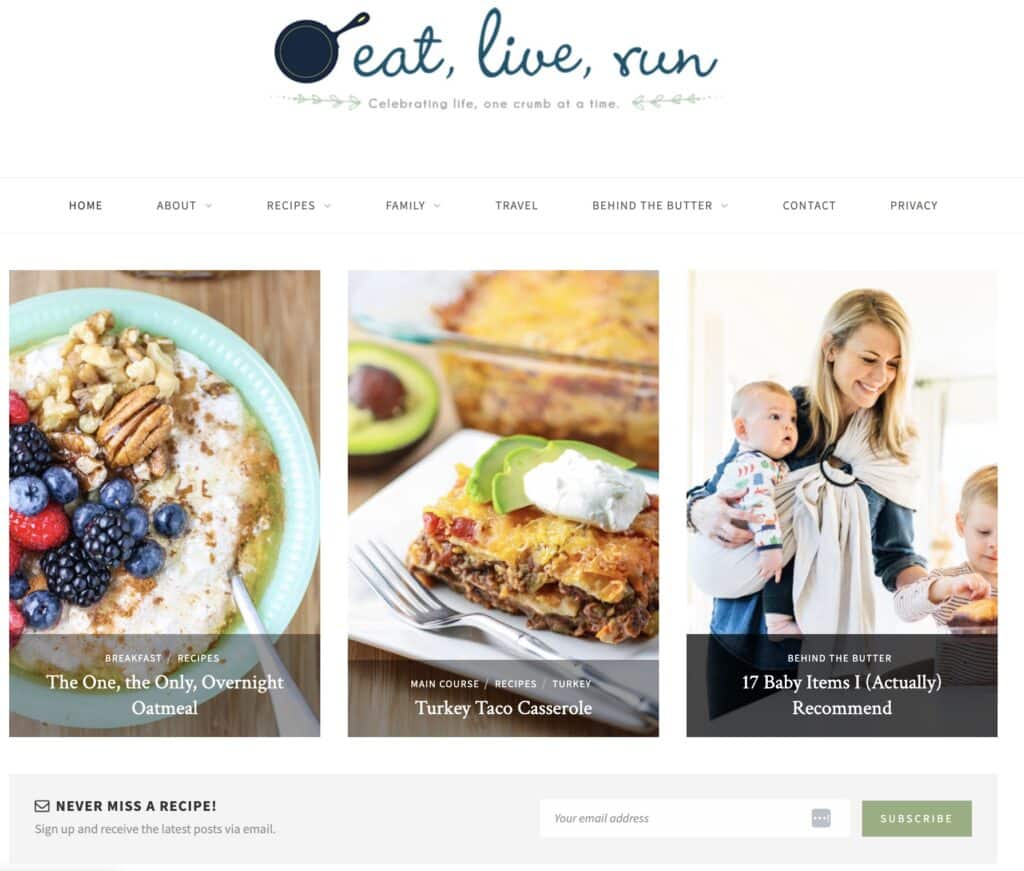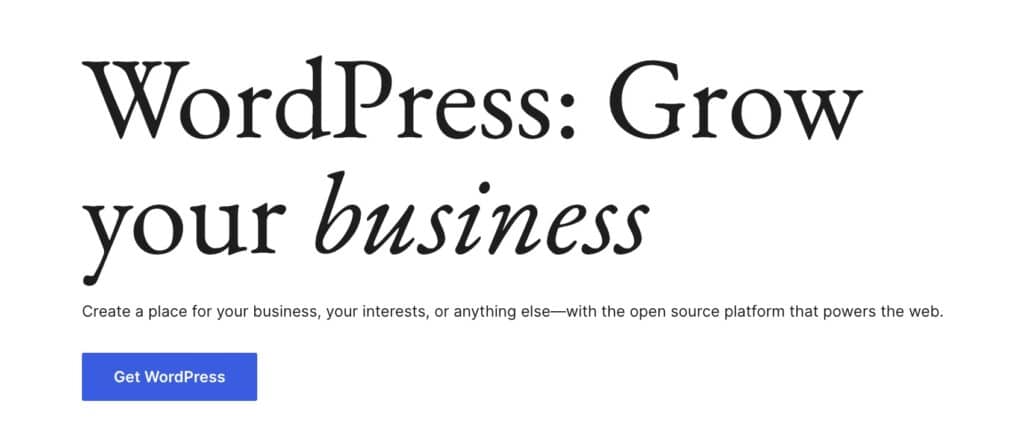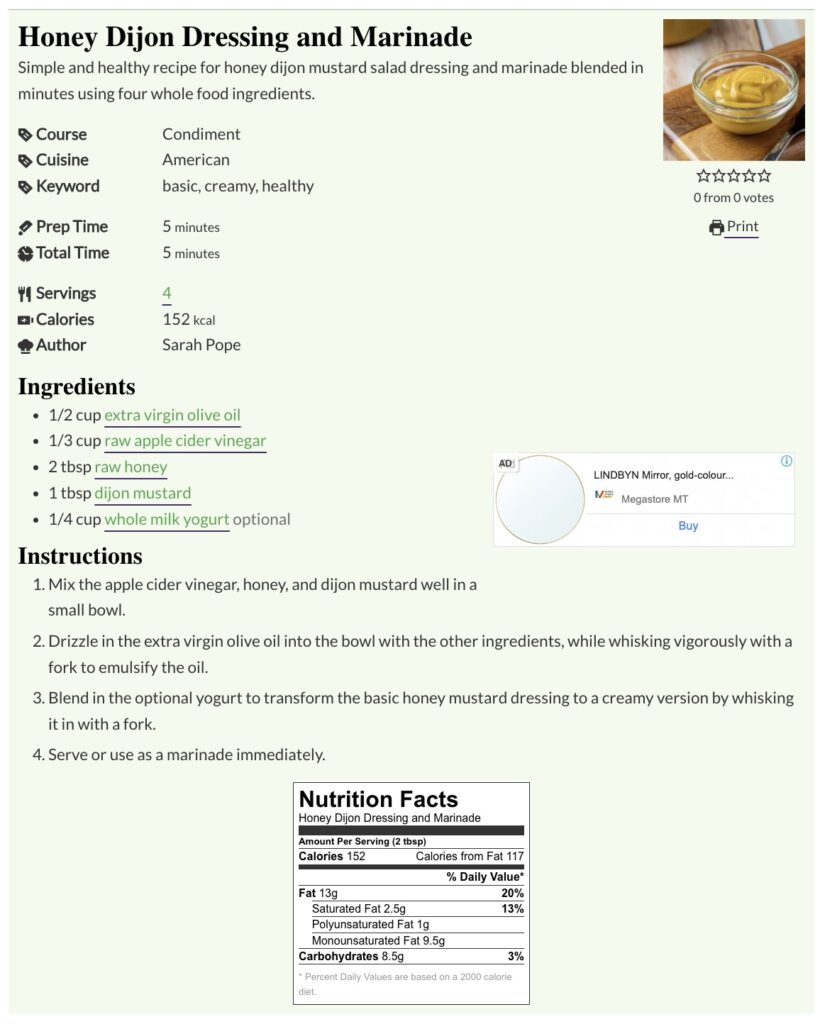Health and wellness content is everywhere on the internet these days. It’s a significant part of the digital landscape because more and more people are prioritizing their physical and mental well-being. The demand for such content is driven not only by the growing audience but also by the increasing importance individuals place on their wellness. Indeed, the wellness industry is projected to grow to $7 trillion by 2025.
As such, anyone looking to start a health blog has the potential to reach a target audience that not only cares about the content they’re publishing, but cares about it a lot. And that makes it an especially lucrative market.
But of course, as you might expect from any lucrative market, competition in this space is fierce. New bloggers can’t expect to build an audience with run-of-the-mill blog content. To succeed, your content must be exceptional, offering real value to readers.
If you’re just beginning your health blogging journey, then this is the page for you. Here you’ll find all the information you need to put together a successful health blog.
Overview of health and wellness blogging
What is a health blog?
A health blog is a platform dedicated to health and wellness topics, covering a wide range of areas such as fitness, mental health, lifestyle, and nutrition. These blogs come in various forms, from serious websites operated by healthcare organizations and professionals to personal blogs run by individuals passionate about a specific aspect of health and wellness.
The tips and advice you’ll find in these health blogs can come in the form of personal experience – as is common among wellness bloggers – or evidence-based information backed by scientific research. Either approach is valid as long as the information is authoritative, accurate, and genuinely valuable to the reader.
It’s the goal of any serious health blogger to build up their readership as much as possible! This not only helps them become regarded as an authority in their field, but it also helps food bloggers earn a salary from the monetization strategies they’ll have implemented on their sites. Common monetization opportunities for health bloggers include selling advertising space, hosting sponsored content, or selling products and services.
Different types of health and wellness blogging
Health and wellness blogs come in various types and cater to different interests. Here are some of the main categories you’ll come across online:
Nutrition and diet blogs: These blogs revolve around food, recipes, and meal planning, often tailored to specific dietary needs or preferences. They may focus on topics like veganism, gluten-free diets, or low-carb eating, providing guidance and inspiration for individuals seeking nutritious and delicious meals.
Fitness and exercise blogs: These blogs are dedicated to sharing workout routines, exercise tips, and strategies for achieving fitness goals. They often provide guidance on different types of exercises, training methodologies, and advice on maintaining an active and healthy lifestyle.
Mental health blogs: Mental health blogs delve into various aspects of mental well-being. They discuss topics such as managing stress, coping strategies, self-care practices, and personal experiences related to mental health challenges. These blogs aim to promote awareness, understanding, and support for individuals dealing with mental health issues.
Lifestyle and wellness blogs: These blogs cover a wide range of health-related topics beyond nutrition and fitness. They explore areas such as stress management, sleep hygiene, self-care practices, mindfulness, and personal development. Lifestyle and wellness blogs provide holistic guidance for individuals seeking to improve their overall well-being.
Choosing a specific niche within the health and wellness industry can help bloggers stand out from the competition and attract a more targeted audience. By focusing on a particular area, such as plant-based nutrition, HIIT workouts, anxiety management, or eco-friendly lifestyle choices, bloggers can establish themselves as experts in their chosen niche, creating content that resonates with a specific audience seeking specialized knowledge and guidance.

How do you start a health blog?
In this guide, we will provide you with a step-by-step approach to kickstart your journey into health blogging. We will cover practical steps for planning and creating your blog content, along with valuable tips and tricks to help you grow your audience and maximize your blog’s success.
Before you start: Define your blogging goals
For your blog to be successful, you’ll need to establish clear objectives before you even get started. underway. Once you know what you’re hoping to achieve, you’ll find that it’s much easier to create content, promote your website, and choose the right monetization strategies.
Need some inspiration? Some common blogging goals include:
- Sharing personal experiences from your own healthcare journey.
- Becoming an authority on specific health topics or conditions.
- Building a community of like-minded individuals who are passionate about improving their mental, physical, or spiritual well-being.
- Generating revenue through advertising, sponsored content, or selling products and services.
Bear in mind that no two health and wellness blogs are exactly the same. Before getting yours underway, think about your unique strengths, area of expertise, and interests. Once you know what you have to offer the world, you’ll be able to create authentic, engaging blog content that your target audience connects with.
Step 1: Choose your health blog niche
Taking a general “catch-all” approach to your health and wellness blog may lead to some success, but it will make things more challenging for you. When people seek tips and advice online regarding their well-being, they are specifically looking for content that addresses their particular needs, not generic information.
So, the first step is to figure out which specific aspect of the health and wellness industry your website will cater to. Try to be as specific as possible, and remember that the goal is to set yourself apart from the competition and offer value to a targeted audience.
Three effective methods for selecting your health blog niche include:
- Taking a deep dive into your personal interests and expertise.
- Assessing market demand and analyzing the competition; picking a niche within a crowded field will have a higher chance of failure.
- Considering your target audience, and what they look for in website content.
Step 2: Create your health blog website
Once you’ve figured out the purpose of your website, you’ll be ready to move on to the practical matter of actively creating and setting up your health blog website.
This is a step-by-step process that even non-technical people can follow. The main steps of setting up your website include:
Domain registration
Your website needs a name. Remember that the domain name you select will have a big impact on the overall success or failure of the site; if the name is too complicated, then it’s unlikely that anyone will remember it. Choose a name that’s easy to remember and, crucially, one that’s relevant to the content you plan to host on the blog.
Choosing a content management system (CMS)
There are plenty of content management systems to choose from, but for the vast majority of users, WordPress will be best. It offers extensive customization options with a wide range of themes and templates available, allowing you to tailor the appearance and layout of your website to align with your brand and aesthetic preferences. Furthermore, the platform’s plugin extendibility empowers you to enhance the functionality of your website without the need for extensive coding knowledge.

With its user-friendly interface, you can easily create and manage content, ensuring a seamless blogging experience. Additionally, WordPress boasts an active community and support resources, providing you with assistance, tutorials, and the latest updates.
Deciding on branding
A site is much more likely to be successful if it has memorable, attractive, and consistent branding. We’ll go into greater detail about how you can customize the look and feel of your site below in step three.
Step 3: Customize your health blog
Your health blog will need to stand out from the crowd to attract and retain an audience. The best way to do this is to customize the appearance and functionality of your website so that it’s in line with your branding. It’s all about creating a unique and engaging experience for the user. Here’s how you can do this as a WordPress user.
Selecting the right WordPress theme
When it comes to choosing a WordPress theme, the options are vast, but not all of them will suit your website’s needs. It is crucial to select a theme that aligns with your niche and overall branding. Beyond the aesthetics, consider factors such as plugin compatibility, customization options, and available support.
Think of it as finding the perfect ingredient for your recipe, ensuring that your website looks and functions flawlessly. By carefully evaluating these criteria, you’ll find the ideal theme that completes the puzzle for your professional and visually appealing website.

Extending your website’s functionality with plugins
WordPress is pretty powerful out of the box, but to maximize the efficiency and success of your website, you’ll need a few additional plugins. Which ones you need will depend on the type of website you run. For example, if you’re running a nutrition health blog, then WP Recipe Maker, which allows you to create visually appealing and well-organized recipe posts, will be key.
Some of the key features of WP Recipe Maker include:
- Fully customizable templates, which allow for recipes that match the look and feel of the website.
- The ability to offer a personalized experience to site visitors via adjustable servings and units.
- API access, which allows for even more granular control over all aspects of your recipe posts.
Here’s an example of how The Healthy Home Economist uses WP Recipe Maker to share healthy recipes:

Step 4: Create your first content
Now, let’s tackle the challenging part: crafting top-notch content that captivates and informs your target audience while staying true to the niche and goals of your blog. Great content is the foundation of a successful blog, and it can’t be achieved by chance alone. It requires a strategic approach. In the following steps, we’ll outline key elements to include in your content strategy, ensuring that your blog features exceptional and engaging content.
Content planning and SEO strategies
Start by developing a comprehensive plan for your content strategy, including a brainstorming session to generate topic ideas within your niche. If you need inspiration, AI tools can assist in generating ideas. Create an editorial calendar to schedule your content postings, allowing enough time between updates to engage visitors with fresh material.
SEO plays a crucial role in ensuring your great content gets noticed by search engines. Begin by conducting keyword research using AI tools to identify relevant search terms in your niche. Optimize your web pages with on-page optimization techniques, such as incorporating headings, subheadings, meta descriptions, images, and alt-text.
Boost your website’s SEO further by implementing effective link building strategies. This involves obtaining backlinks from other websites, either through paid SEO services or reciprocal linking with relevant sites.
Additionally, WP Recipe Maker provides valuable SEO support with automatic metadata management, which makes it more likely that Google will display your recipes as rich snippets.
Writing great health blog content
If you want to build an audience for your website, then you have to create great content. Low-quality content will serve no one and certainly won’t help you achieve the crucial goal of attracting returning visitors.
There’s a formula for writing health content that resonates with the target audience. Some recommended tips include:
- Write using clear language, using a conversational tone.
- Provide useful, actionable tips and advice.
- Create a list of topics you want to talk about. E.g., nutrition and wellness could be two separate categories.
- Write in short paragraphs and avoid any ‘fluff’ to keep your content concise and to the point.
- Use your own experiences and other personal stories to connect with readers.
- Position yourself as a voice of authority within the health and wellbeing industry.
- Make your content visually engaging by including images and videos, both of which will also help with your on-page SEO.
- Refresh your content regularly to keep the information up-to-date and relevant.
- Incorporate compelling CTAs to inspire your readers to take action.
Researching and backing up claims
It’s important to provide accurate information in all industries, but it’s especially important in the health and wellness industry. Posting incorrect information can rightly cause your visitors to question your credibility. If you want to maintain the trust of your readers, follow these best practices:
- Cite reputable sources and data, including those from scientific papers, expert opinions, and official government agency guidelines.
- Fact-check any information you post and intentionally avoid sensationalism and misinformation.
- Make a clear distinction between evidence-based advice and your own personal opinions and advice.
Step 5: Promote and grow your health blog
Now that you’ve got a website full of valuable content, it’s time to promote the website and build your audience. Attracting a loyal readership is a key step for anyone wishing to monetize their blog and generate maximum revenue. Some ideas for promotion, growth, and monetization include:
Networking and collaborations
It’s easier to grow a website when you have the support of others. Look at partnering with professionals, brands, and influencers from within the health and wellness industry. You can do this by:
- Interacting with influencers and other healthcare bloggers on social media platforms.
- Being an active member of any online communities related to your niche.
- Pitching to and publishing on relevant websites and publications.
Health blog monetization strategies
The most popular ways to monetize a health blog include:
Advertising: Platforms such as Google AdSense allow website owners to display advertisements on their sites.
Affiliate Programs: Affiliate marketing is the process of promoting products or services from other businesses in exchange for a share of the sales revenue. It’s important to select products or services that are relevant to your niche. If you have a WordPress website, you can leverage WP Recipe Maker to create attractive and well-structured recipe posts that seamlessly incorporate affiliate links, including ingredient links and equipment links.
Sponsored Content: Sponsored content involves partnering with brands who pay to have supportive content featured on your website or to receive an honest review of their products. This collaboration allows brands to leverage your platform to reach your audience and promote their offerings.
eCommerce: This involves selling products or services related to your niche, including cooking courses, digital cookbooks, and other eBooks, or even branded kitchen gadgets!
Start your health blog journey today
The health and wellness industry is poised for significant growth in the coming years, presenting a prime opportunity to venture into health blogging. Building a successful health blog requires dedication, but it is attainable by following these key steps:
- Establish a niche: Find a specific area within the health and wellness landscape that aligns with your expertise and interests.
- Invest in your website: Create a professional and user-friendly website that reflects your brand and provides a seamless browsing experience.
- Create high-quality content: Produce engaging and informative content that resonates with your target audience and adds value to their lives.
To enhance the effectiveness of your health blog, consider utilizing the WP Recipe Maker plugin. This powerful tool enables you to showcase customized recipes on your website, perfectly integrating with its overall design and aesthetics.
Take your health and wellness blog to the next level by getting started with WP Recipe Maker!






